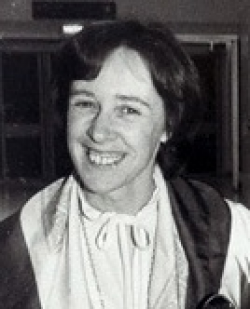Jean Purdy

- Born
- 25 April 1945
- Died
- 16 March 1985 (age 39)
Jean Marion Purdy was a British nurse and laboratory colleague of Steptoe and Edwards and assisted in the work of creating the world's first 'test-tube baby'.
Purdy was on the front lines of the emerging speciality of in vitro fertilisation (IVF) in the 1970s. IVF, now a common procedure, is used for couples who are otherwise infertile and have trouble conceiving. An egg from the woman is removed and fertilised in the laboratory with sperm donated from the man. The fertilised egg is implanted back into the woman where it should develop normally.
Purdy's career started off as an operating room nurse. However, she changed her career in 1968 when she was hired by Dr Patrick Steptoe and Dr Robert Edwards who were leading the research in IVF. Her previous role as a nurse made her aware of the difficulties that couples who couldn't conceive were going through. An 'exceedingly dedicated woman', Purdy worked as a laboratory technician and wrote the records of every case they researched on.
Purdy's work was accused of being unethical and creating life within a laboratory was seen by many as "playing God". Nevertheless, Purdy nurtured embryos in the lab through nearly ten years of failing experiments, and never gave in to the critics. Her work culminated in her observing the birth of the first ever baby conceived as a result of IVF, Louise Brown.
I never forgot the first time you showed me a human embryo. Alive! Gazing down the microscope I needed your help to see the tiny ball of cells floating in a pink ocean of culture fluid. You hovered behind me, probably worried that a green student might spill the precious mite you had just created by in vitro fertilization. It took five more years of struggling research until your breakthrough with the embryo that became Louise Brown. Now there are millions like her.
Prof Roger Gosden, in a letter to Purdy
Purdy also involved herself in other scientific advances. She developed the first aspiration catheter that assists in embryo transfer. She was also the first person to provide a written description of the human blastocyst (the ball of cells that go on to form an embryo), and was the first nurse to work with urinary luteinising hormones (LH). The testing of LH in urine samples can now be used to test when a woman is ovulating, which is the point in the menstrual cycle that a woman is most likely to get pregnant. Such development has helped many couples struggling to get pregnant.
Jean Purdy developed an early incurable cancer and passed away at the young age of 39 in 1985.



